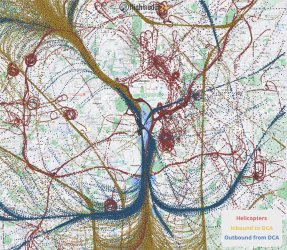justinbrett
Enthusiast
- Joined
- Mar 6, 2006
- Posts
- 10,536
- Qantas
- Platinum
- Oneworld
- Emerald
It was, but it also had lateral movement at the time, which makes it no threat, whilst the other aircraft on finals had a constant bearing. I don't think that there's much doubt that they never locked on to the dangerous aircraft.
From what I understand about flying with goggles, you have to be careful about head movements, as they can be disorienting, so the normal head movements that a pilot might make to keep things in sight, may not be advisable. Of course that then puts us to a question of whether these goggles should really allow an aircraft to fly VFR, if they limit the ability to maintain visual separation.
Ah, but that wouldn't be convenient.
They shouldn't have accepted (or offered) pilot visual separation wearing NVGs. Perhaps this is the crux of the issue.
The simulation was clearer than I expected. Absolutely can see how the two inbound aircraft can be initially confused (hell, I've seen a tower controller confuse an aircraft with a star), but in closer range, especially at the time of the second traffic call, I would expect any VFR pilot (rated for night) to accurately spot the CRJ. At least with a controller who can make decent traffic calls.

















